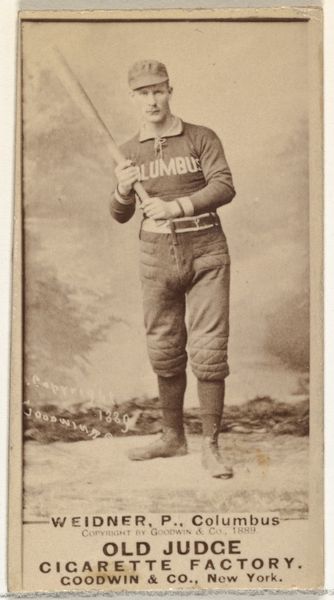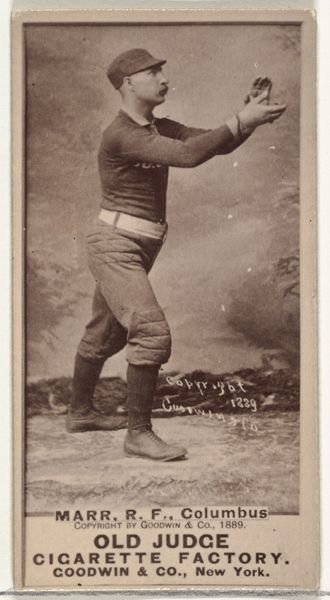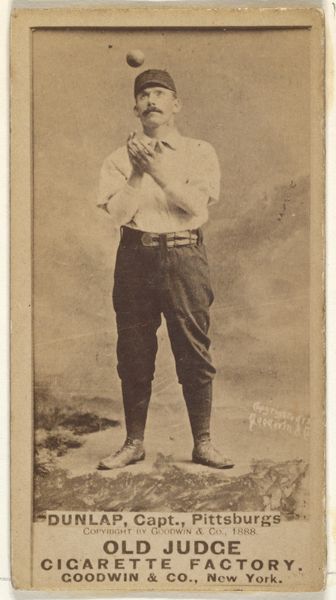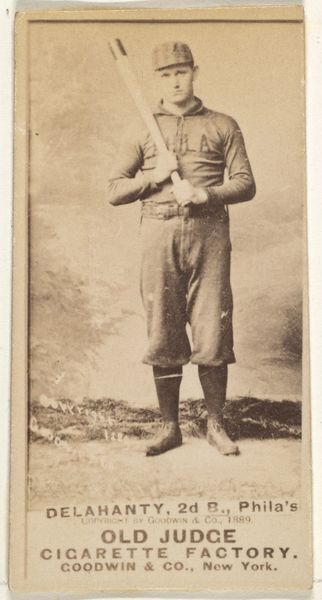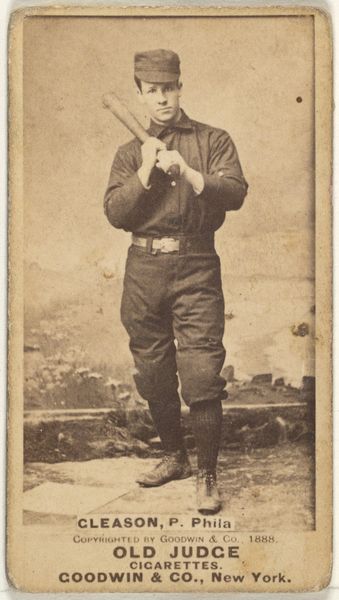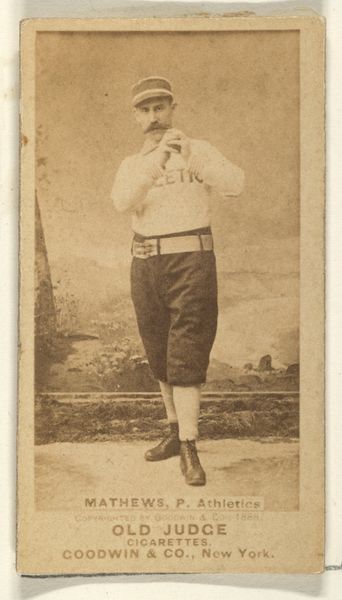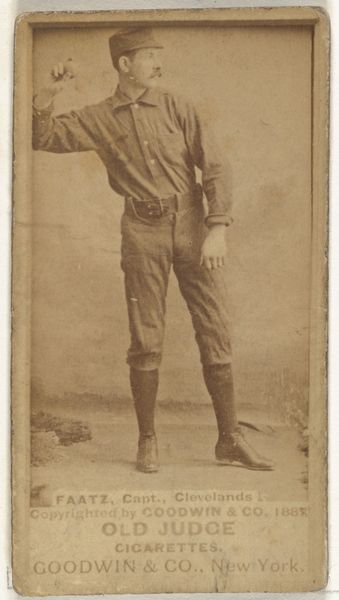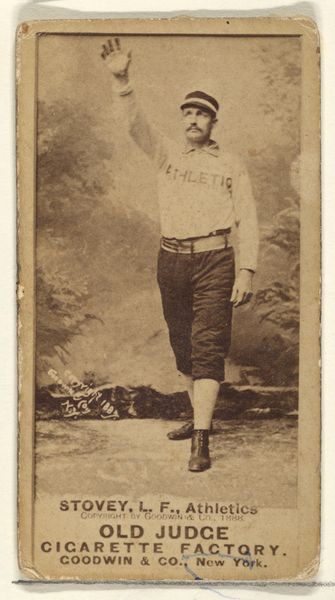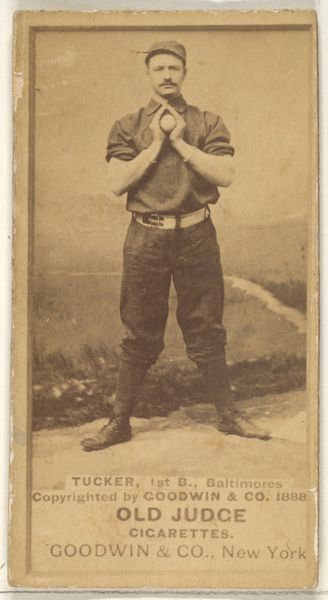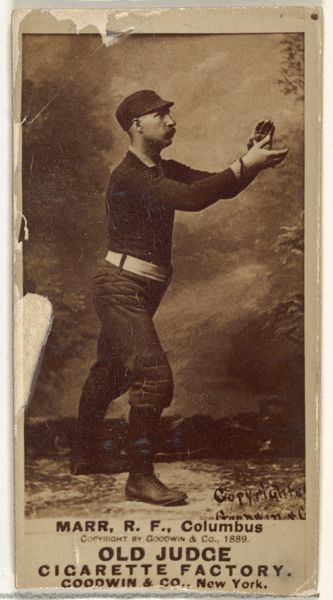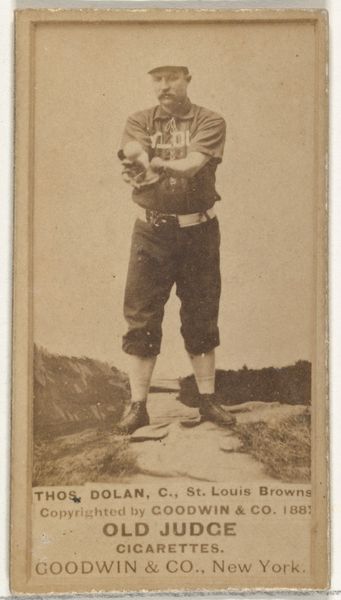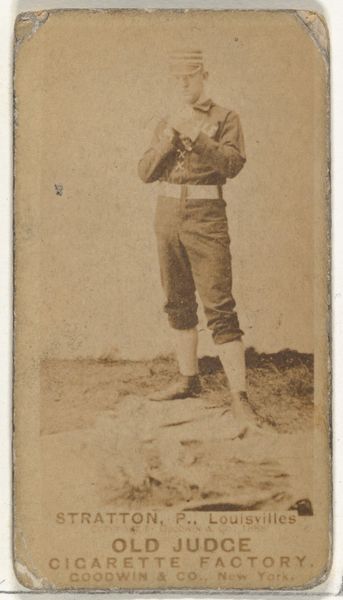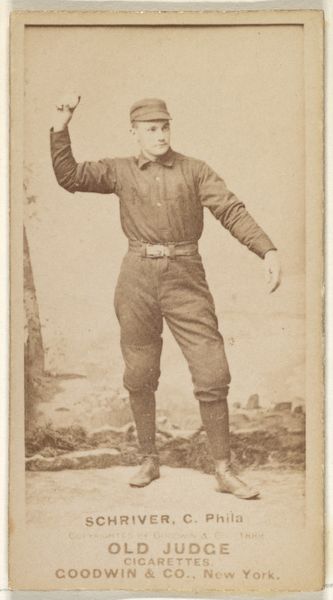
Charles W. "Lefty" Marr, Right Field, Cleveland, from the Old Judge series (N172) for Old Judge Cigarettes 1889
0:00
0:00
drawing, print, photography, albumen-print
#
portrait
#
drawing
# print
#
baseball
#
photography
#
men
#
athlete
#
albumen-print
Dimensions: sheet: 2 11/16 x 1 3/8 in. (6.9 x 3.5 cm)
Copyright: Public Domain
Curator: Let's consider this albumen print from 1889, “Charles W. "Lefty" Marr, Right Field, Cleveland," produced by Goodwin & Company as part of the Old Judge Cigarettes series. Editor: There’s something inherently striking about its materiality. This tiny, fragile card, likely passed around countless hands, presents us with a tangible link to a very different era of baseball and how heroes were made. Curator: I agree. Formally, observe the composition. Marr, centrally placed, establishes a clear focal point. His pose, with a subtly clenched fist, injects a narrative tension. His uniform's stark lines are echoed by the print's overall stark contrast, giving a geometrical rhythm. Editor: Yes, the albumen print process itself is important. Creating this image involved coating paper with egg white and silver nitrate, requiring both photographic and chemical knowledge. These images weren’t mass produced in the way that we think of photos today. Consider also what an ordinary worker’s wages might be; there's a story of material and cultural accessibility locked within each card. Curator: The very concept of immortalizing athletes through consumer products, and linking heroism with such practices, provides a complex reading of the society itself, its emerging popular cultures. A capitalist echo resonates. Editor: Precisely, it’s a commodification, yes, but it also tells us about a very early effort to build popular narratives and connect them with particular modes of consumption and spectatorship. You’re buying not just the baseball card, but into an aspirational lifestyle or idealized narrative. Curator: The neutral backdrop invites speculation. Is it meant to isolate Marr, drawing all attention to his persona, or merely an economic strategy omitting true environment to save resources? A clever balance or plain indifference? Editor: Perhaps both. While technically rudimentary in ways, they present enduring ideas about celebrity and access. Looking back, these prints become far more than advertising: they become cultural relics. Curator: True, such artifacts compel a reconsideration of value. How formalism or even materialism intersects the historical meaning. A confluence of interpretation is essential. Editor: Indeed, appreciating the material means deepens our understanding, showing what such a small piece can actually reflect about the people, industries, and values surrounding its creation.
Comments
No comments
Be the first to comment and join the conversation on the ultimate creative platform.
